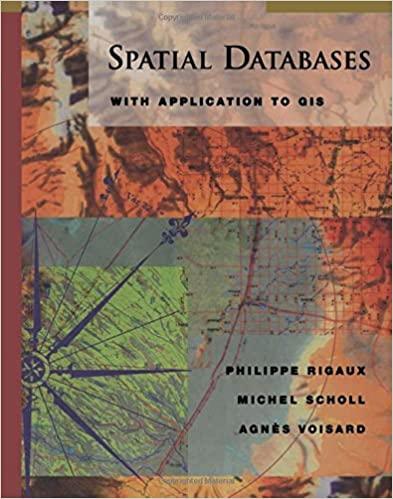Question
C++ Frequency Distribution Program program will compute a frequency distribution using a structure array with subscripts program will dynamically allocate memory and read data from
C++ Frequency Distribution Program
program will compute a frequency distribution using a structure array with subscripts
program will dynamically allocate memory and read data from a file
file may contain multiple data sets to process
Data array will be dynamically allocated and deleted; pointers used in all functions except for
finding the frequency distribution using a structure array and printing the structure array
*/
#include
#include
#include
#include
using namespace std;
struct Fdistribution // Fdistribution becomes a type declarator
{
short unique, count; // two values for each instance of this structure variable
} ;
short * allocate_array_and_read_file(short size, ifstream &filein);
void display_array(short *data, short size);
Fdistribution *frequency_distribution(short *data, short size, short &sizeF);
void display_distribution(Fdistribution frequency[], short sizeF);
int main()
{
short *data, // pointer to dynamically allocated memory
size, // number of elements in dynamically allocated memory
sizeF, // number of values stored in structure array
datasetNum = 1; // number of data set currently processing
Fdistribution *frequency; // pointer to structure array for frequency distribution
ifstream filein("dataset8.txt"); // open file and set file pointer to file location on C drive
// NOTE - data file must be in same folder as cpp and/or exe file
while(filein>>size) // loop continues while data in file
{
data = allocate_array_and_read_file(size, filein);
cout<<" Data set "< display_array(data, size); cout<<" Program will compute a frequency distibution "; frequency = frequency_distribution(data, size, sizeF); display_distribution(frequency, sizeF); delete [] data; // delete statement does not change value of pointer data = NULL; delete [] frequency; frequency = NULL; } cout<<" program done "; //system("pause"); //return 0; } short * allocate_array_and_read_file(short size, ifstream &filein) // function to dynamically allocate and initialize array { /* you write the code */} // the data will be read from a file not the keyboard void display_array(short *data, short size) { /* you write the code */} Fdistribution *frequency_distribution(short *data, short size, short &sizeF) { /* you write the code */} void display_distribution(Fdistribution frequency[], short sizeF) { /* you write the code */} More information about program functions Write a void function, frequency_distribution, to store all unique values and their frequencies in a structure array using the data stored in the data array. The structure array is a dynamically allocated array that you will allocate in this function to have the same size as the data array. You can use subscripts to access this array. Be sure that the function assigns a value to the variable, sizeF, so that the number of values stored in the structure array is known to other functions that access this array Write a void function, display_distribution, to print the values stored in the structure array in two columns. The first column will be the unique value and the second column will be the frequency of the value. There will be only two values on each line of the display. You can use subscripts to access the structure array in this function. Example: data set contains the following values: 1, 2, 7, 3, 11, 2, 4, 5, 0, 8, 8, 8, 11, 4, 3, 4, 1, 1, 2, 2, 2, 5, 9 Output would be: Value Frequency 1 3 2 5 7 1 3 2 11 2 4 3 5 2 0 1 8 3 9 1
Step by Step Solution
There are 3 Steps involved in it
Step: 1

Get Instant Access to Expert-Tailored Solutions
See step-by-step solutions with expert insights and AI powered tools for academic success
Step: 2

Step: 3

Ace Your Homework with AI
Get the answers you need in no time with our AI-driven, step-by-step assistance
Get Started


